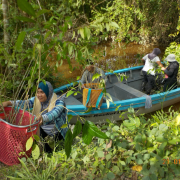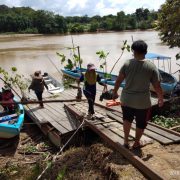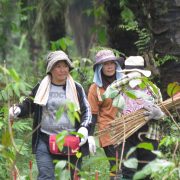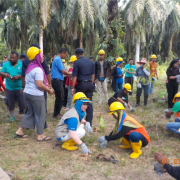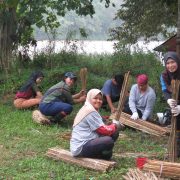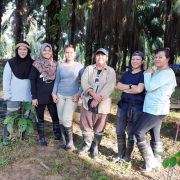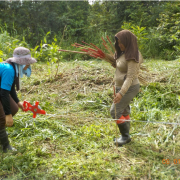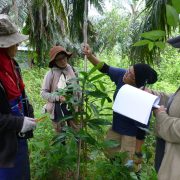A tough year of Covid lockdown hasn’t halted conservation efforts led by the all-female reforestation team of our partner NGO (non-governmental organization) on Malaysian Boreno, Hutan.
The Kinabatangan floodplain located in the North of the island is one of the most biodiverse regions in Malaysia and indeed worldwide, a haven for threatened charismatic species such as the Bornean orang-utan and Bornean elephant. It is under a great deal of pressure however, with the last few decades bringing agricultural expansion, habitat degradation and fragmentation to the region at a rate unseen before. The global demand of commodities is insatiable, and oil palm plantations now cover about 90% of the Kinabatangan landscape.
Pocket fragments of forest have survived along the expanse of the 560km long Kinabatangan river, but these scattered morsels are incapable of sustaining populations of the region’s wildlife in the long run. When resources in these pockets become scarce, wildlife must roam into human-developed areas for sustenance, bringing species such as elephants or orangutans into conflict with humanity when they inevitably turn to eating crop and human food to survive.
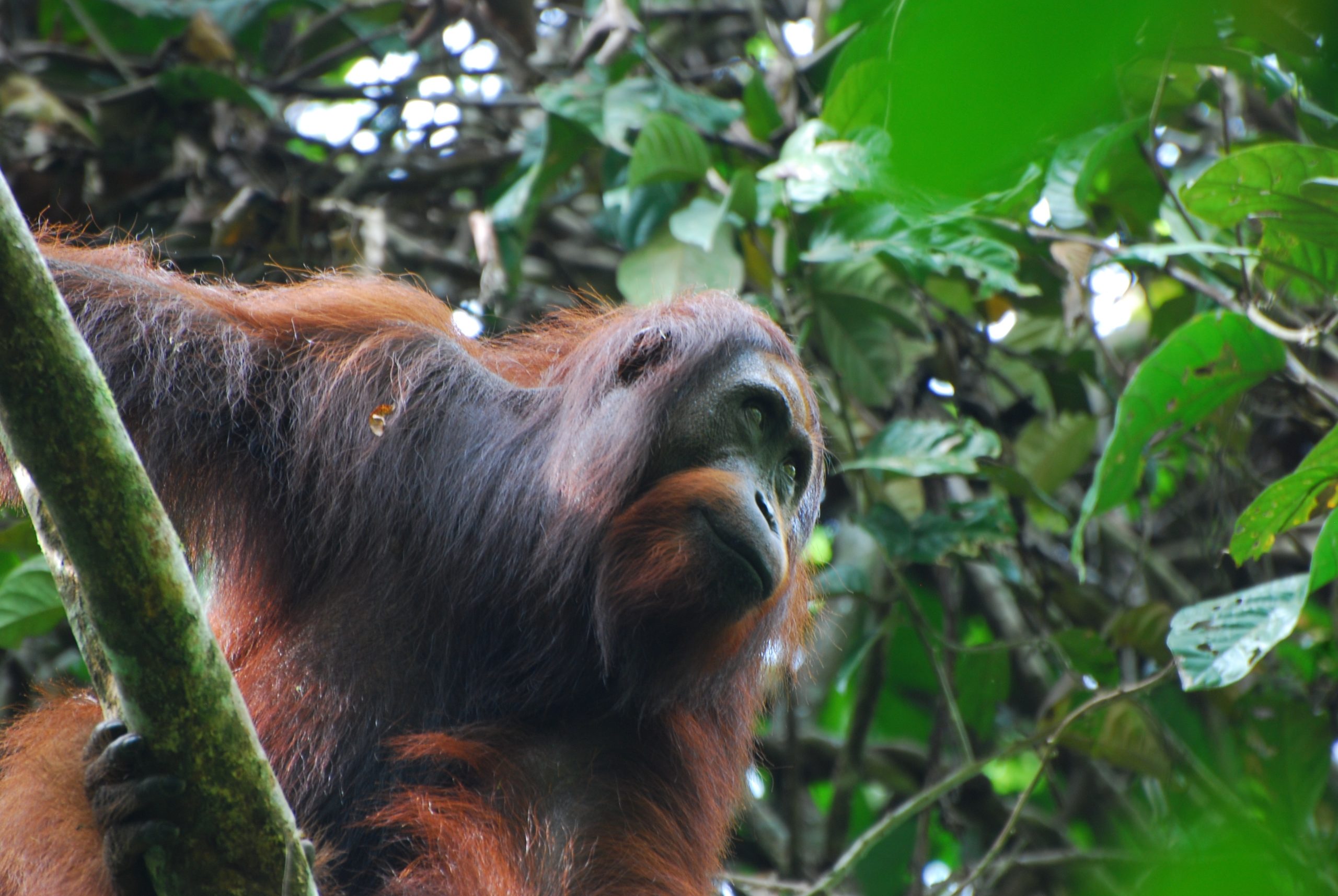
So what do we do about it? How do you restore a landscape so changed for human purposes?
Hutan have been championing the ecological concept of the wildlife corridor – a compromise between the needs of wildlife and the human population of an economically developing nation. Wildlife corridors exist by connecting smaller fragments of habitat to ensure safe passageway for wildlife through a region, connecting biodiversity otherwise marooned in forest chunks.
For the last two years, Hutan have worked fiercely on the development of the Genting wildlife corridor. For women to have a permanent job is rare in Kinabatangan, and yet since 2008 an entirely female team has carried out huge scale landscape restoration projects, now turning their attention to the Genting area.
Pictured below – Hutan’s reforestation pose for a photo at their tree nursery in Borneo, surrounded by the saplings that’ll form new wildlife corridors throughout the local region.
Native trees purchased from community nurseries by the NGO are transported first to Hutan’s nursery where they’re carefully raised to the right size and strength to give them the best chance of establishment. When the time is right, the team carry the plants manually to the wildlife corridor that is to become their home.
Pictured above – The Hutan team carry their trees through the Kinabatangan landscape to the site of the wildlife corridor for planting.
For three and a half months last year they were locked down as the pandemic took hold, a frustrating loss of time. Despite this, in 2020 they were successful in planting an astounding 14,160 tree seedlings from 21 different native tree species.
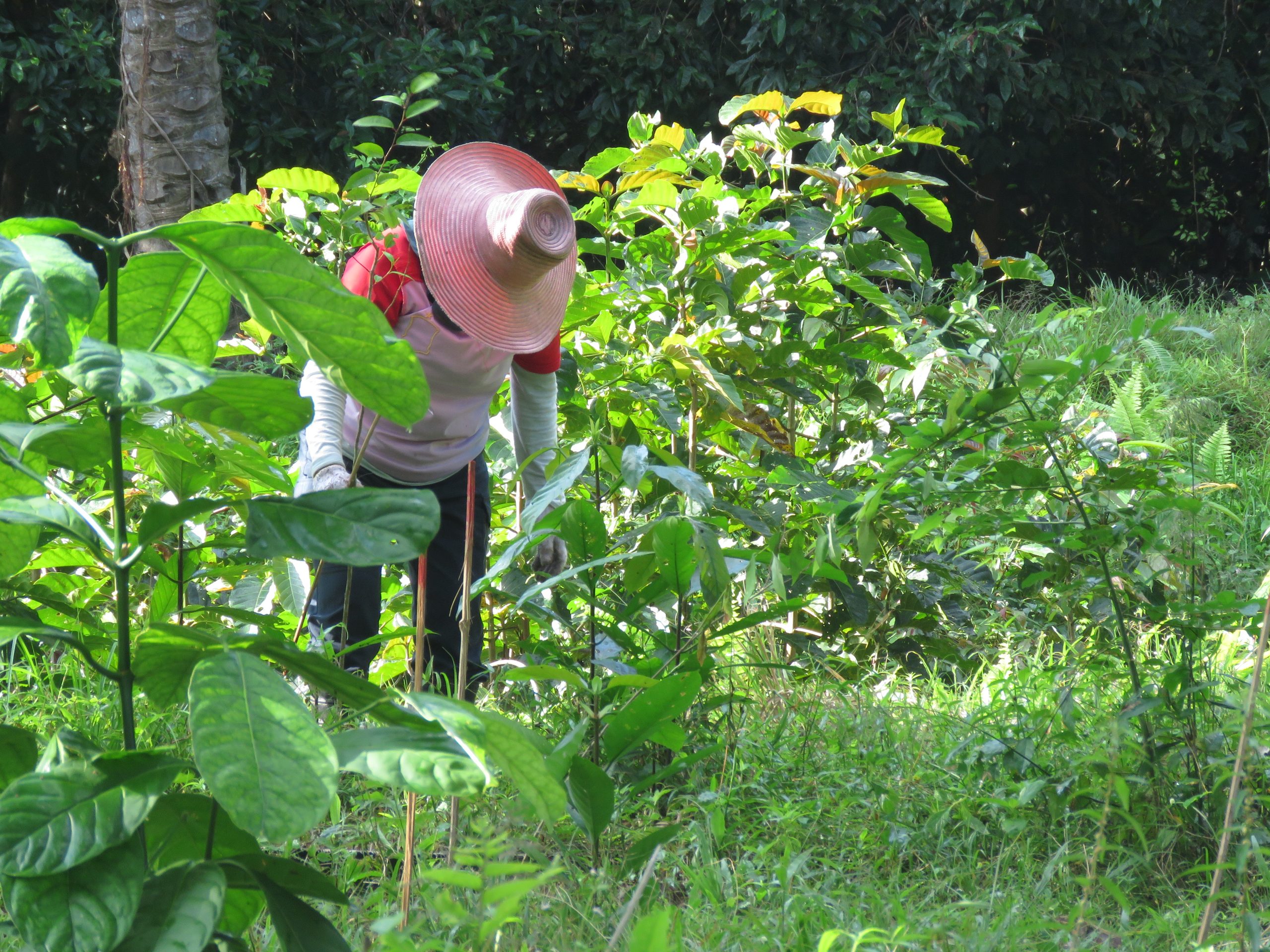
Two years on from the beginning of work at Genting, monitoring efforts now show the signs of success. The team are witnessing a rapid wildlife recolonization of the area by an assortment of wildlife species. There’s a twist though. Curiously, increasing animal presence results in a higher predation rate of newly planted seedlings by macaques, pigs and deer, increasing plant losses. But fear not, this is a natural process of any healthy ecosystem. The native fauna fertilises seeds in their digestive tracts and spreads them afar. “Wild” seedlings growing throughout Genting are on the rise, and there is true hope that the region’s biodiversity can be preserved.
Pictured above – The people making wildlife corridor development possible – (C) Hutan
We’re incredibly proud to be one of Hutan’s major funders and partners in conservation, with this important reforestation project being financially backed partly through our partnership with the Co-op.
Our partnership with Hutan spans close to two decades and sees us collaborating on multiple projects across Borneo. Find out more about our partnership to help the Bornean orangutan.
OUR TEAM OF EXPERTS WORK IN SIX REGIONS AROUND THE GLOBE – REPRESENTING SOME OF THE PLANET’S MOST BIODIVERSE HABITATS. Discover more about our SCIENCE AND CONSERVATION work.
NOW is the time to ACT FOR WILDLIFE. Conservation is CRITICAL; species are under threat. TOGETHER we can make a BIG difference. Take action TODAY and join us in PREVENTING EXTINCTION.
